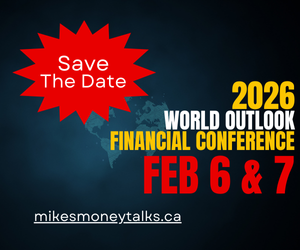Bonds & Interest Rates
For those who suspect the status quo is unsustainable but aren’t quite sure why, I’ve prepared a simple chart that explains the financial precariousness many sense. The chart depicts the two core elements of a debt-based, consumerist economy: disposable earnings, defined as the earnings left after paying for essentials which can then be used to service debt and debt.
In other words, if all the household earnings are spent on non-discretionary expenses (rent or mortgage, taxes, food, utilities, healthcare, etc.) then there is no money left to pay the interest and principal on a loan. Lenders consider this household uncreditworthy for the simple reason that their earnings cannot support the monthly nut of debt service (interest and principal).

Patrick and John Collison have got the luck of the Irish.
Stripe — the Irish brothers’ digital payments brainchild — has reportedly raised $600m at a $95B valuation, making it the most valuable private company ever to come out of Silicon Valley.
Here’s why: It’s the platform other platforms use to process money
Some 90% of US adults have bought from companies that use Stripe.
The company counts Amazon, Salesforce, Microsoft, Shopify, Uber, and Zoom among its customers — and at least 50 of these customers process $1B+ on Stripe annually.
In 2020, the company signed up 200k+ new European customers and handled 5k requests per second.
All this success is a boon for Ireland
Stripe plans to invest heavily in Europe and create 1k jobs at its Dublin HQ, a plus for a budding Irish startup community that saw total VC funding jump 13% in 2020.
CEO Patrick Collison, still just 32, was especially proud of a $50m investment in Stripe from Ireland’s National Treasury Management Agency.
But Stripe didn’t even need the funding…
… “It will just sit on the balance sheet” as a “rainy day fund,” according to Mike Moritz, partner at Sequoia and a Stripe board member.
Stripe, whose mission is to increase the GDP of the internet, sees a wide-open road ahead, with just 14% of commerce happening online today, up from 10% a year ago.
Stripe’s already done well at achieving that mission: The company has greater payment volume today than the entire ecommerce market when it was founded a decade ago.
Patrick and John, the next round of Guinness is on you.

Yes. We are in a stock market bubble. But what if conventional methods of examining market cycles miss a crucial point? While we often talk about parts of cycles (bull or bear), exploring the full-market cycle may provide another way to look at long-term bubble cycles.
Understanding The Risk
Over the next several weeks, or even months, the markets can extend the current deviations from the long-term mean even further. But that is the nature of every bull market peak and bubble throughout history as the seeming impervious advance lures the last of the stock market “holdouts” back into the markets.
As Vitaliy Katsenelson once wrote:
“Our goal is to win a war, and to do that we may need to lose a few battles in the interim. Yes, we want to make money, but it is even more important not to lose it.”
I wholeheartedly agree with that statement, which is why we remain invested but hedged within our portfolios currently.
Unfortunately, most investors have very little understanding of markets’ dynamics and how prices are “ultimately bound by the laws of physics.” While prices can certainly seem to defy the law of gravity in the short-term, the subsequent reversion from extremes has repeatedly led to catastrophic losses for investors who disregard the risk.
Just remember, in the market, there is no such thing as “bulls” or “bears.”
There are only those who “succeed” in reaching their investing goals and those that “fail.”

Rogers Communications Inc. has signed a deal to buy Shaw Communications Inc. in a deal valued at $26 billion, including debt.
The transaction, which would combine Canada’s two largest cable companies as well as their wireless networks, will require a variety of approvals from federal agencies.
Rogers chief executive Joe Natale told analysts in a morning conference call that it’s too early to speculate on whether the competitors will be required to divest any of their operations.
“But we feel confident this transaction will be approved,” Natale said.

South Korean TV bans commercials so product placement becomes a $100m+ industry and Subway is one of the biggest spenders (with its product in no less than 17 shows).
The sandwich chain’s aggressive use of product placement has made it a ubiquitous presence on the country’s television shows.
In an episode of the Korean television show “The K2,” which takes place in a world of fugitives and bodyguards, a man is being treated with a defibrillator when he enters into a dream state. On the fringe of death, he recalls taking a past love to a Subway restaurant and to a park for a picnic, where he gently feeds her a sandwich and soft drink with the Subway logo facing the camera.
The detail is not a narrative quirk. It is a result of South Korea’s broadcasting regulations and the aggressive use of product placement in the country’s shows by Subway, the American sandwich chain famous for its $5 foot-longs.












